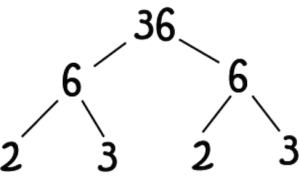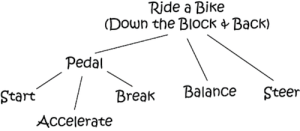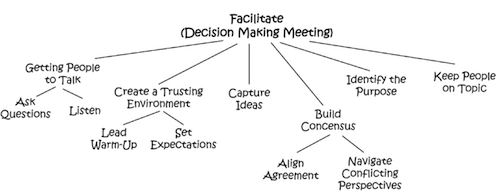I was doing math with my 13-year-old daughter Hannah and had another leadership epiphany. If you are thinking this sounds like my last blog, you are correct. Yes, I am learning leadership lessons from math. I started college thinking I was going to be an engineer, so maybe my mathematical inclinations are being stirred. Thus, be prepared for a modified math tool that will help you help others learn new skills.
Let me first set the stage for the focus of this tool. Leaders help people learn new skills. Sometimes, the challenge is getting to the core skills that will maximize growth. This is where the mathematical insight begins. There is a mathematical process called prime factorization that illustrates the process of getting to the core skills of a given task.
Prime Factorization
Prime factorization is a mathematical process of determining which prime numbers multiplied together make the original number. Prime numbers are numbers that can only be divided by one and the number itself. Here is a list of common prime numbers: 1, 2, 3, 5, and 7. A factor tree is a way to find the prime numbers that when multiplied together make the original number. Here is an example of a factor tree u sing the number thirty-six.
sing the number thirty-six.
In this example the prime numbers are 2, 3, 2, and 3. When these numbers are multiplied together, the product is thirty-six. This same process can be applied to a task in order to determine the core skills. I will use the example of riding a bike down the block and back to create a task tree.
Task Tree
 A task tree starts with the central task. In this case, the task is riding down the block and back. The task is then broken down into specific skills as this illustration shows. In this task tree, we see the core skills are start, accelerate, break, balance, and steer. These are building blocks to complete the task, and each skill is needed to accomplish this specific task.
A task tree starts with the central task. In this case, the task is riding down the block and back. The task is then broken down into specific skills as this illustration shows. In this task tree, we see the core skills are start, accelerate, break, balance, and steer. These are building blocks to complete the task, and each skill is needed to accomplish this specific task.
Here is another example of a task tree focused on a common task in business, facilitating a decision making meeting.
In this example, the core skills are asking questions, listening, lead warm-ups, setting expectations, capturing ideas, aligning agreement, navigating conflicting perspectives, identifying the purpose, and keeping people on topic.
These are two examples of creating a task tree in order to identify the core skills. As you practice identifying core skills, do not get stuck by trying to get it perfect. There is no flawless task tree. The important concept to consider is breaking down the task into clear core skills so you can better understand where to focus development.
Math comes through again. If you or someone you work with is struggling with a particular task, create a task tree to clearly identify the core skills. Then, identify the key core skills that need training. This will provide the opportunity for focused development.




